The feed conversion ratio (FCR) is a key indicator in pig farming. It measures the amount of feed required to produce a unit of pork and is expressed as a ratio, e.g., 2:3 FCR means two kilos of feed are required to produce 3 kilos of pork. Therefore, a good FCR is essential for profitable pig production.
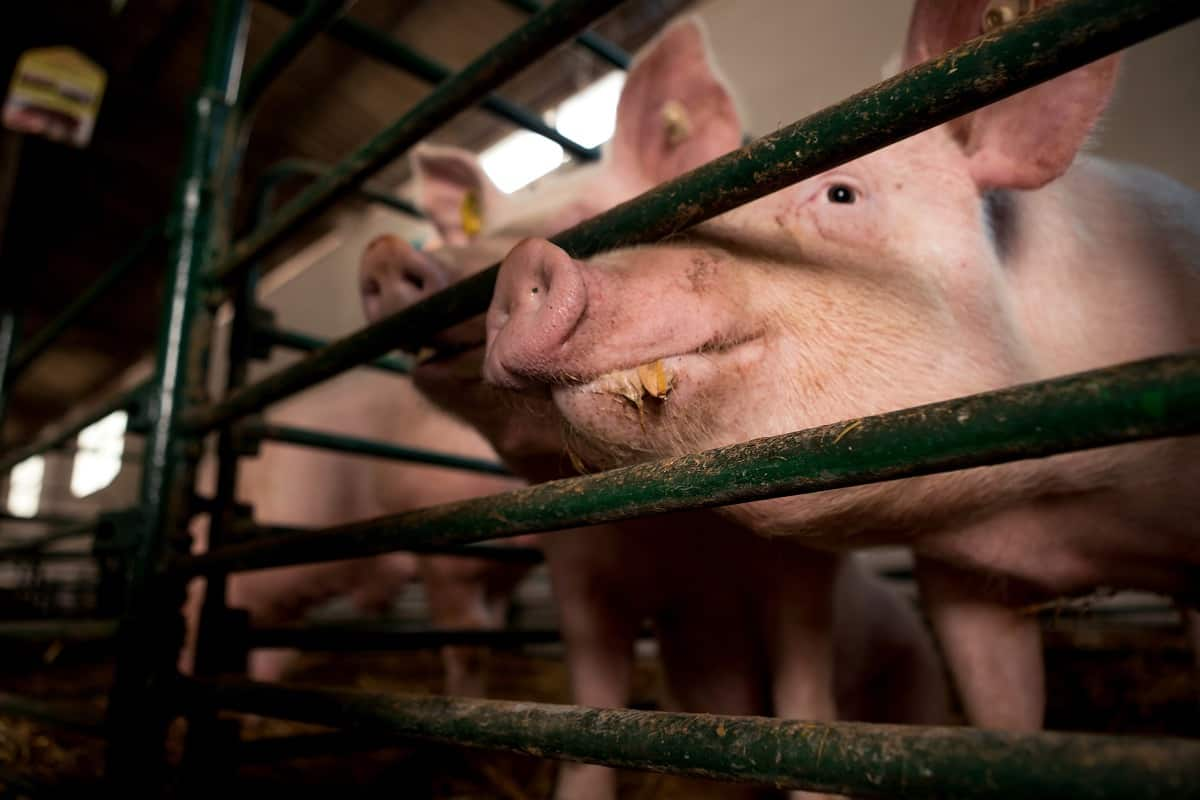
The key rules to improving the feed conversion ratio in pig farming are providing balanced nutrition, minimizing stress, reducing environmental temperature and humidity variations, and optimizing stocking density and ventilation systems. With proper management and attention to detail, a good FCR can be achieved, which will help farmers maximize their profits from their pigs.
Key rules to improve Feed Conversion Ratio (FCR) in Pigs
What is FCR in pig farming?
FCR is a key metric in pig farming and refers to the ratio of feed intake to weight gain. Therefore, improving FCR is essential for profitability, and several key strategies can be employed to achieve this. The FCR measures how much feed a pig needs to convert into body weight. Improving FCR can help farmers bring down production costs and increase profit margins by reducing feed waste and increasing the efficiency of pigs in converting food into body mass.
Firstly, selecting the right breed of pig for your operation is important. Some breeds are more efficient eaters than others, which will directly impact FCR. Secondly, diet and nutrition are critical factors in achieving optimal FCR. Finally, good management practices play a role in maximizing FCR. For example, pigs must be kept clean and free from disease, as health problems can lead to reduced feed intake and impaired growth. In addition, proper housing, ventilation, and temperature control are important for optimizing productivity and maintaining animal welfare.
In case you missed it: Earning 20 Lakh Per Year from Raising Pigs – A Success Story of a Pig Farmer
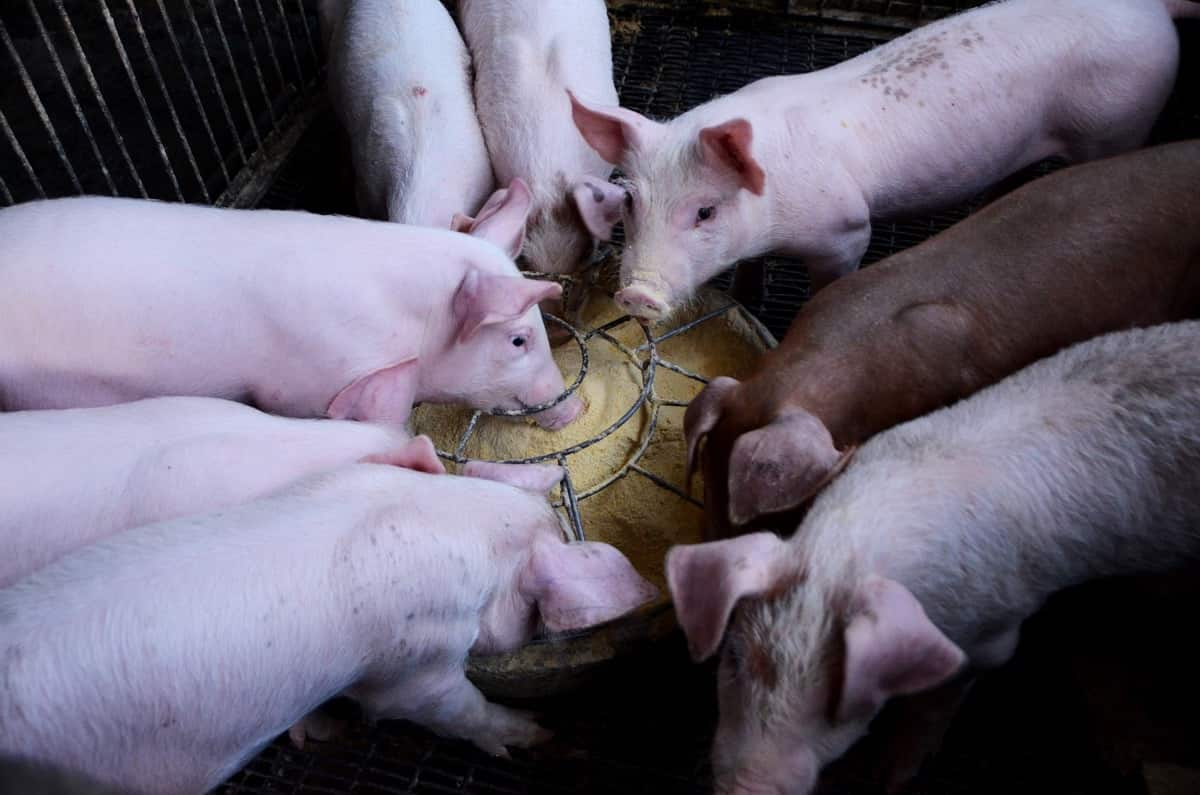
Factors that improve feed conversion ratio in pigs
- Improve the quality of your pig feed
- Use a balanced diet for your pigs
- Avoid overfeeding your pigs
- Give your pigs access to plenty of clean water
- Keep your pigs’ housing clean and well ventilated
- Control the temperature in your pigs’ housing
- Reduce stress levels in your pigs
- Provide enrichment for your pigs (e.g., straw, toys)
- Monitor your pigs regularly for signs of illness or injury and seek veterinary care when necessary
- Work with a qualified nutritionist to develop a tailored feeding plan for your operation
All these factors can have an impact on the feed conversion ratio. For example, if the pigs are not healthy, they may not be able to convert the feed into body mass as efficiently as healthy pigs. Or, if the environment is too hot or humid, the pigs may not be able to digest the feed.
Different ways to improve FCR in pig farming
1. Use the right feed formulation: The first step to improving FCR is to use the right feed formulation for your pigs. This means using a feed that is high in energy and nutrients but low in fiber. Fiber is indigestible by pigs and can decrease the digestibility of other nutrients.
2. Optimize pig health: Healthy Pigs tend to have better appetites and more efficiently digest their food. Therefore, optimizing pig health is key to improving FCR. This can be done by ensuring good hygiene, providing adequate ventilation, and using health-promoting additives in the feed.
3. Use appropriate feeding methods: Another way to improve FCR is to use appropriate feeding methods. This includes using the correct amount of feed per pig and feeding frequency and duration. Overfeeding can lead to poor digestibility and decreased appetite, while underfeeding can cause the malnourishment of pigs.
4. Improving the quality of the feed: This includes using higher-quality ingredients and providing more nutrients essential for pig growth.
5. Improving pig health: This can be done by ensuring pigs have access to clean water and vaccinations and providing them with a comfortable environment.
In case you missed it: 17 Key Rules for Effective Piggery Management: From Planning to Reduce Production Cost
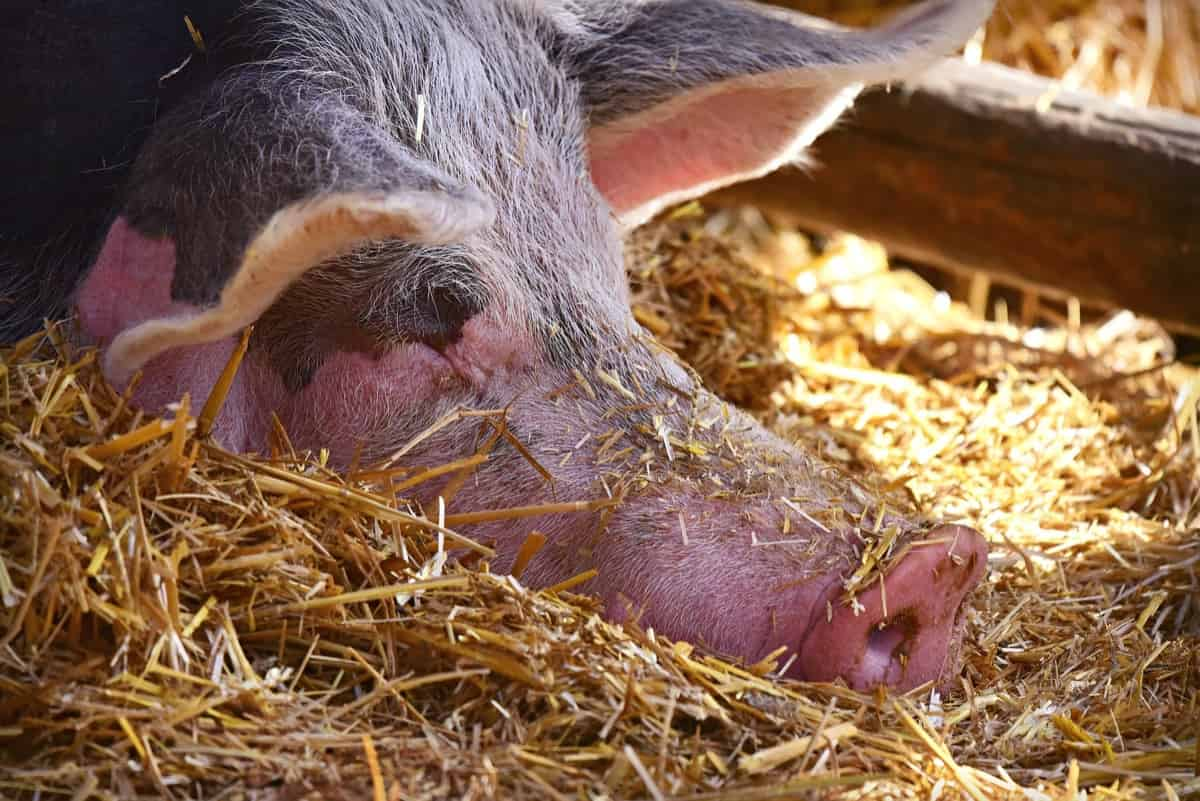
6. Improving management practices: This includes properly spacing pigs during feeding and ensuring enough space for pigs to move around freely.
If the pigs are older and heavier, they will require more food to maintain their body weight. Conversely, if the pigs are younger and smaller, they will need less food. Additionally, environmental conditions can play a role in the FCR. For example, if it is hotter or colder outside, pigs will require more or less food to maintain their body temperature. The quality of the feed is the most important factor in determining the FCR.
A high-quality feed will have a higher nutrient density which means that fewer pounds of feed are required to provide nutrients needed by animals per day. In other words, better feeds result in better FCRs. There are several ways to improve FCR on your farm. One way is to focus on feeding high-quality feeds with high nutrient density. Another way is to carefully consider all factors that can affect FCR and ensure that you are taking them into account when measuring results.
Factors that impact feed conversion ratio in pig farming
- The feed quality: This is probably the most important factor impacting FCR. If the pigs are not getting a nutritious diet, they will not be able to convert it into body mass efficiently.
- The age and health status of the pigs: Younger, healthier pigs will have a better FCR than older, sick pigs.
- The genetics of the pigs: Some pigs are more efficient at converting feed into body mass than others. This is due to their genes and cannot be changed by the farmer.
- The environmental conditions: If the pigs are kept in dirty, cramped conditions, this will negatively impact their FCR. Pigs with access to clean water, fresh air, and ample space will have a better FCR than those without.
How do you find the FCR of a pig?
To calculate the FCR of a pig, you will need to know the pig’s weight at the beginning and end of the test, as well as the amount of feed consumed during that time. The formula for calculating FCR is:
FCR = (amount of feed consumed in grams) / ((end weight in grams – start weight in grams) + (amount of feed consumed in grams))
For example, if a pig starts out weighing 10 kg and consumes 2 kg of feed over 30 days, and ends the period weighing 12 kg, the calculation would be as follows:
FCR = (2000 g) / ((12000 g – 10000 g) + (2000 g)) = 0.667 or 2:3
Key rules to improve FCR in pig farming
Several factors influence feed conversion efficiency, including genetics, health, age, housing, nutrition, and environment. Some factors are within the farmer’s control, while others are not. However, there are some key rules that farmers can follow to improve FCR on their farms.
1. Select the right pig breed: The first rule is to select the right pig for your farm conditions. There are many different breeds available; each has its own characteristics that make it more or less suited to different farming systems. Speak to your vet or an experienced pig farmer to find out which breed is best for you.
In case you missed it: Key Rules to Improve Feed Conversion Ratio (FCR) in Fish: For Better Profits in Fish Cultivation
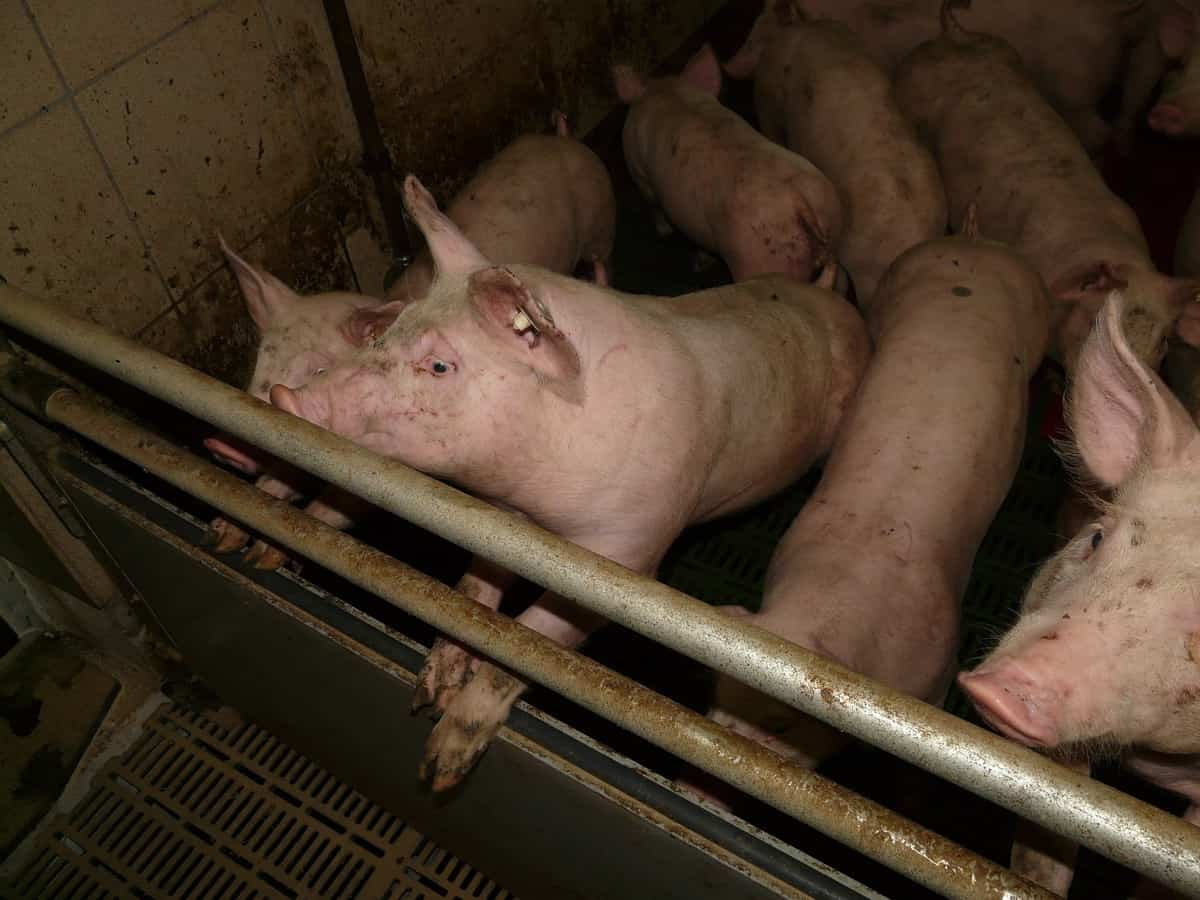
2. Pigs health: A healthy animal will have a better appetite and be able to digest food more efficiently than an unhealthy one. Work with your vet to develop a health management plan for your herd that includes regular health checks, vaccinations, and prompt treatment of sick animals.
3. Have a well-balanced diet: A well-balanced diet is essential for pigs of all ages and stages. Make sure to include all the necessary nutrients, vitamins, and minerals in their diet. Maintain a consistent diet and avoid sudden changes in feed. Sudden changes in diet can stress pigs out and lead to digestive problems that reduce feed conversion efficiency. The next rule is to provide the right nutrition for your pigs at every stage of their life.
4. Maintain proper weight: Proper weight is important for pigs to maintain good health and avoid obesity. Therefore, keep an eye on their weight and adjust their food intake accordingly.
5. Keep them clean: Pigs must be kept clean to prevent disease and maintain good health. This includes regular cleaning of their pens and providing clean water at all times. In addition, it provides plenty of space for pigs to move around and exercise. Pigs cramped up are more likely to become stressed, leading to reduced appetite and poor feed conversion efficiency.
6. Get vaccinated: Vaccinating your pigs is important for preventing disease and ensuring good health. Talk to your veterinarian about which vaccines are appropriate for your pigs.
7. Provide enrichment: Enrichment keeps pigs mentally stimulated and reduces boredom. This can include providing toys or other objects for them to play with and variety in their diet and environment.
Tips for improving Feed Conversion Ratio in pig farming
- Select the right genetic stock: Use breeds selected for high feed efficiency.
- Optimize diets: Work with a nutritionist to formulate diets that maximize nutrient utilization and minimize wastage.
- Manage pig health: Keep pigs healthy to reduce the need for medication and improve feed utilization.
- Minimize stress: Stress can impact appetite and digestion, so strive to create a low-stress environment for pigs.
- Monitor and record data: Keep track of FCR data over time to identify trends and opportunities for improvement.
- Use high-quality feed ingredients: High-quality feed ingredients are important factors in achieving a good FCR. This means using ingredients that are high in digestibility and nutritionally dense.
- Minimize feed wastage: Feed wastage can significantly impact FCR. Therefore, it is important to minimize waste using appropriate feeding methods and storage techniques.
- Use nutritional supplements: Nutritional supplements can help improve FCR by providing pigs with additional nutrients they may be lacking in their diet.
- Monitor pig health: Pig health is another important factor in achieving a good FCR. Pigs that are healthy and well-nourished will convert feed better than those that are not. Therefore, regular monitoring of pig health will help ensure that animals meet their dietary needs.
- Disease outbreaks – If an outbreak of a disease affects pigs, this could lead to higher mortality rates and reduced production.
In case you missed it: Key Rules to Improve Feed Conversion Ratio (FCR) in Dairy Animals: For More Profits in Dairy Farming Business
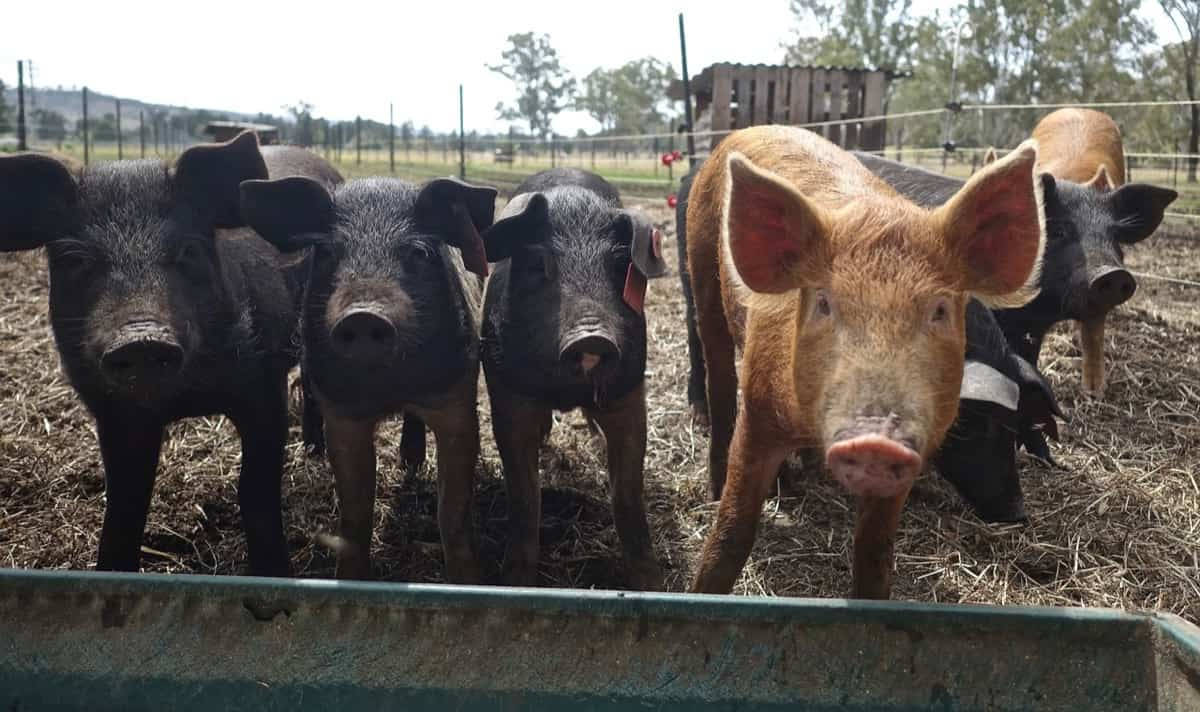
Feed Conversion Ratio improvement strategies in pig farming
There are a variety of strategies that pig farmers can use to improve their animals’ feed conversion ratio (FCR). One key strategy is ensuring that pigs have access to clean water at all times. Water is essential for proper digestion and helps to keep pigs’ appetites stimulated. Another important strategy is to provide pigs with a balanced diet that contains all the necessary nutrients for growth and development.
Pigs require a diet high in protein, energy, and minerals such as phosphorus and calcium. Farmers should work with nutritionists to develop a diet plan that meets their pigs’ needs. In addition, it is crucial to maintain proper environmental conditions in the barn or shed where pigs are housed. The temperature should be comfortable, and the area should be well-ventilated to prevent respiratory problems.
Ample space should be provided so that pigs can move around freely and exercise; this will help them stay healthy and have strong muscles. Finally, handling pigs carefully and avoiding stressful situations whenever possible is important. Pigs that are stressed tend to eat less and gain weight more slowly, adversely affecting FCR. By following these key strategies, farmers can significantly improve their animals’ feed conversion ratio and overall health.
In case you missed it: Key Rules to Improve Feed Conversion Ratio (FCR) in Goats: For More Profits in Goat Farming
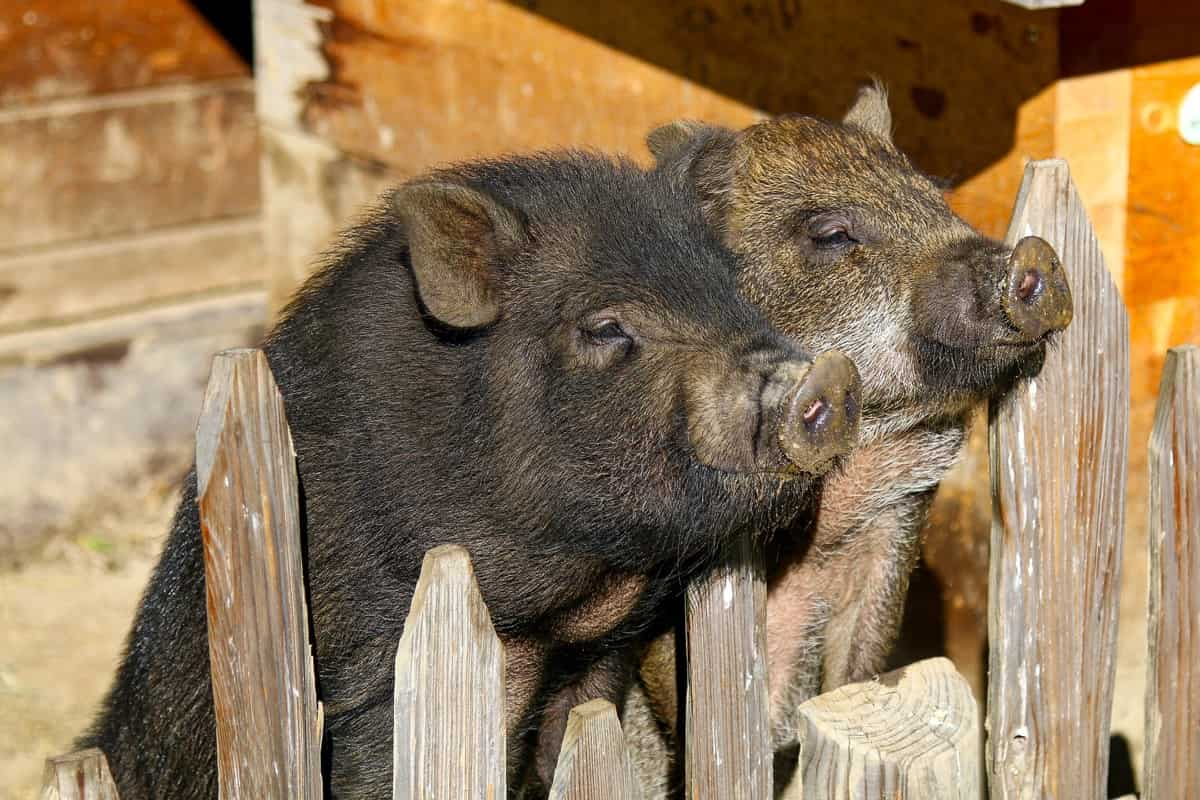
Conclusion
Pig farming is a lucrative business if done correctly, and one of the most important metrics to measure success is Feed Conversion Ratio (FCR). This ratio determines how efficient your farm’s production is, measuring the amount of feed input versus the amount of output. With the right knowledge and techniques, it is possible to improve your feed conversion ratio in pig farming.
Pig farming is an age-old practice that yields high returns for farmers, with a well-managed farm resulting in considerable profits. However, most farmers fail to maximize their potential income because they lack the knowledge to optimize the Feed Conversion Ratio (FCR).
- Types of Pesticides Used in Agriculture: A Beginner’s Guide
- Economical Aquaculture: A Guide to Low-Budget Fish Farming
- 15 Common Planting Errors That Can Doom Your Fruit Trees
- How to Make Houseplants Bushy: Effective Tips and Ideas
- Innovative Strategies for Boosting Coconut Pollination and Yield
- Pollination Strategies for Maximum Pumpkin Yield
- The Complete Guide to Chicken Fattening: Strategies for Maximum Growth
- Natural Solutions for Tulip Problems: 100% Effective Remedies for Leaf and Bulb-Related Issues
- Revolutionizing Citrus Preservation: Towards a Healthier, Greener Future
- Natural Solutions for Peony Leaf and Flower Problems: 100% Effective Remedies
- Maximizing Profits with Avocado Contract Farming in India: A Comprehensive Guide
- Natural Solutions for Hydrangea Problems: 100% Effective Remedies for Leaf and Flowers
- The Ultimate Guide to Choosing the Perfect Foliage Friend: Bringing Life Indoors
- From Sunlight to Sustainability: 15 Ways to Use Solar Technology in Agriculture
- The Ultimate Guide to Dong Tao Chicken: Exploring from History to Raising
- The Eco-Friendly Makeover: How to Convert Your Unused Swimming Pool into a Fish Pond
- Mastering the Art of Delaware Chicken Farming: Essentials for Healthy Backyard Flocks
- 20 Best Homemade Fertilizers for Money Plant: DIY Recipes and Application Methods
- How to Craft a Comprehensive Free-Range Chicken Farming Business Plan
- Brighten Your Flock: Raising Easter Egger Chickens for Beauty and Bounty
- How to Optimize Your Poultry Egg Farm Business Plan with These Strategies
- Subsidy for Spirulina Cultivation: How Indian Government Schemes Encouraging Spirulina Farmers
- Ultimate Guide to Raising Dominique Chickens: Breeding, Feeding, Egg-Production, and Care
- Mastering the Art of Raising Jersey Giant Chickens: Care, Feeding, and More
- Ultimate Guide to Raising Legbar Chickens: Breeding, Farming Practices, Diet, Egg-Production
- How to Raise Welsummer Chickens: A Comprehensive Guide for Beginners
- How to Protect Indoor Plants in Winter: A Comprehensive Guide
- Ultimate Guide to Grow Bag Gardening: Tips, Tricks, and Planting Ideas for Urban Gardeners
- Guide to Lotus Cultivation: How to Propagate, Plant, Grow, Care, Cost, and Profit
- Agriculture Drone Subsidy Scheme: Government Kisan Subsidy, License, and How to Apply Online
- Ultimate Guide to Raising Araucana Chickens: Breed Profile, Farming Economics, Diet, and Care
- Bringing Hydroponics to Classroom: Importance, Benefits of Learning for School Students
- Ultimate Guide to Raising Polish Chickens: Breed Profile, Farming Economics, Diet, and Care
- Ultimate Guide to Raising Australorp Chickens: Profile, Farming Economics, Egg Production, Diet, and Care
- Silkie Chicken Farming: Raising Practices, Varieties, Egg Production, Diet, and Care
- Sussex Chicken Farming: Raising Practices, Varieties, Egg Production, Diet and Care